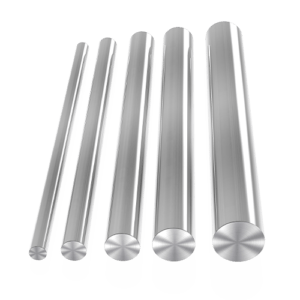Welcome to My Blog!
Before we dive into the content, I’d love for you to join me on my social media platforms where I share more insights, engage with the community, and post updates. Here’s how you can connect with me:
Facebook:https://www.facebook.com/profile.php?id=100090063158454
Now, let’s get started on our journey together. I hope you find the content here insightful, engaging, and valuable.
Introduction

When it comes to materials in various industrial applications, stainless steel is often the go-to choice due to its exceptional properties. Among the various grades available, 430 stainless steel tubing stands out for its unique advantages. This article explores the benefits of using 430 stainless steel tubing, focusing on its composition, applications, and advantages in specific sectors.
Understanding 430 Stainless Steel Tubing
What is 430 Stainless Steel?
430 stainless steel is a ferritic grade of stainless steel, primarily composed of iron, chromium, and small amounts of carbon and other elements. It is known for its moderate corrosion resistance and excellent formability, making it a versatile choice for many applications.
Chemical Composition of 430 Stainless Steel
| Element | Composition (%) |
|---|---|
| Iron | Balance |
| Chromium | 16.0 – 18.0 |
| Carbon | 0.12 max |
| Manganese | 1.0 max |
| Silicon | 1.0 max |
| Phosphorus | 0.04 max |
| Sulfur | 0.03 max |
The specific composition allows 430 stainless steel to be less susceptible to oxidation and offers moderate resistance to various corrosive environments.
Advantages of 430 Stainless Steel Tubing
Corrosion Resistance
One of the primary benefits of 430 stainless steel tubing is its corrosion resistance. While not as high as austenitic grades, 430 provides sufficient protection for various applications, particularly in mild environments.
Cost-Effectiveness
430 stainless steel tubing is generally more affordable compared to higher-grade stainless steels. This makes it an attractive option for projects where budget constraints are a consideration, without sacrificing essential performance attributes.
Aesthetic Appeal
The smooth finish of 430 stainless steel tubing makes it visually appealing. Its polished surface can enhance the aesthetics of products and structures, making it suitable for decorative applications.
Formability and Weldability
This grade of stainless steel exhibits excellent formability and weldability. It can be easily shaped into complex designs, which is beneficial in manufacturing processes that require precise dimensions and shapes.
Heat Resistance
430 stainless steel tubing can withstand higher temperatures compared to some other materials. It retains strength at elevated temperatures, making it suitable for use in environments that experience thermal cycling.
Ease of Maintenance
The low maintenance requirements of 430 stainless steel tubing are a significant advantage. Its resistance to staining and rust means that it typically requires less cleaning and upkeep over time.
Environmental Impact
Using 430 stainless steel tubing can also be environmentally friendly. Stainless steel is recyclable, which means that at the end of its life cycle, it can be reprocessed and reused, reducing the environmental footprint.
Applications of 430 Stainless Steel Tubing
Industrial Applications
In industrial settings, 430 stainless steel tubing is often used for exhaust systems, heat exchangers, and other components that benefit from its corrosion resistance and strength.
Architectural Applications
This material is frequently used in architecture for railings, decorative facades, and structural components, where both durability and aesthetic appeal are important.
Automotive Industry
The automotive industry uses 430 stainless steel tubing in exhaust systems and other components due to its heat resistance and formability.
Food and Beverage Industry
While 430 stainless steel is not typically used for food contact applications (where austenitic grades like 304 are preferred), it is still used in non-food contact parts, thanks to its easy-to-clean surface.
Maintenance of 430 Stainless Steel Tubing

Regular Cleaning
To maintain its appearance and performance, regular cleaning of 430 stainless steel tubing is recommended. Mild detergents and warm water are usually sufficient to remove dirt and grime.
Avoiding Harsh Chemicals
Avoid using harsh chemicals or abrasive cleaners, as these can damage the surface and reduce the material’s corrosion resistance.
Inspection for Damage
Regular inspections can help identify any signs of wear or corrosion early, allowing for timely repairs or replacements.
Conclusion
In summary, 430 stainless steel tubing is a versatile and cost-effective choice for a wide range of applications. Its unique combination of properties, including moderate corrosion resistance, aesthetic appeal, and excellent formability, makes it an ideal material for both industrial and architectural uses. Whether you are in manufacturing, construction, or the automotive industry, considering 430 stainless steel tubing can provide significant advantages.
FAQ
What is the difference between 430 and 304 stainless steel?
430 stainless steel is a ferritic grade, while 304 is an austenitic grade. 304 offers better corrosion resistance and is non-magnetic, whereas 430 is more affordable and has moderate corrosion resistance.
Can 430 stainless steel tubing be welded?
Yes, 430 stainless steel tubing can be welded, although it is recommended to use appropriate welding techniques to maintain its properties.
Is 430 stainless steel suitable for food applications?
While it can be used in some non-food contact applications, 430 stainless steel is generally not recommended for direct food contact. For such applications, austenitic grades like 304 are preferred.
How does the cost of 430 stainless steel tubing compare to other grades?
Generally, 430 stainless steel tubing is more cost-effective than higher grades like 304 and 316, making it an attractive option for budget-conscious projects.
What are the temperature limits for 430 stainless steel?
430 stainless steel tubing can withstand temperatures up to around 1500°F (815°C) but may lose some mechanical properties at higher temperatures. It’s essential to evaluate the specific application requirements.
